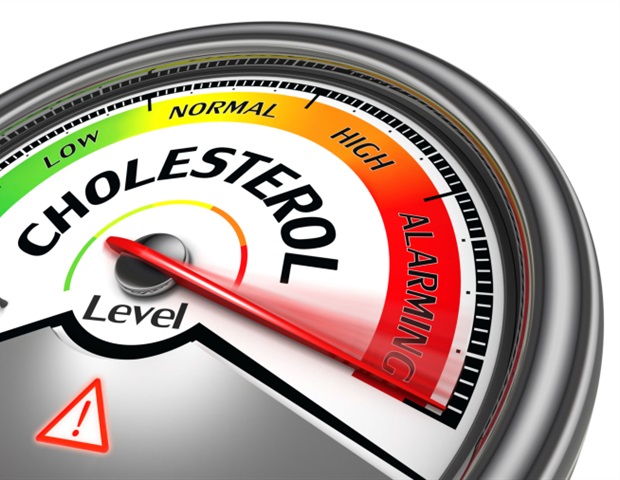Low-density lipoprotein (LDL) cholesterol levels should be lowered as much as possible to prevent cardiovascular disease, especially in high and very high risk patients. That’s one of the main messages of the European Society of Cardiology (ESC) and European Atherosclerosis Society (EAS) Guidelines on dyslipidaemias published online today in European Heart Journal, and on the ESC website.
Cardiovascular disease (CVD) is responsible for more than four million deaths in Europe each year. Clogged arteries, known as atherosclerotic CVD, are the main type of disease. The guidelines provide recommendations on how to modify plasma lipid levels through lifestyle and medication to reduce the risk of atherosclerotic CVD.
There is now overwhelming evidence from experimental, epidemiological, genetic studies, and randomized clinical trials, that higher LDL cholesterol is a potent cause of heart attack and stroke. Lowering LDL cholesterol reduces risk irrespective of the baseline concentration. It means that in people at very high risk of heart attack or stroke, reducing LDL cholesterol is effective even if they have below average starting levels.”
Professor Colin Baigent, Chairperson of the guidelines Task Force and director of the MRC Population Health Research Unit, University of Oxford, UK
There is no lower limit of LDL cholesterol that is known to be unsafe. The guidelines aim to ensure that the available drugs (statins, ezetimibe, PCSK9 inhibitors) are used as effectively as possible to lower levels in those most at risk. It is recommended that such patients should achieve both a target LDL cholesterol level and a minimum 50% relative reduction.
“This is to ensure that high- or very high-risk patients receive intensive LDL cholesterol-lowering therapy irrespective of their baseline level,” said Professor Alberico L. Catapano, Chairperson of the guidelines Task Force and professor of pharmacology at the Department of Pharmacological and Biomolecular Sciences, University of Milan, Italy. “Patients who are already close to their target on current treatment will be offered additional treatment that provides a further minimum 50% reduction.”
“Statins are very well tolerated, and true ‘statin intolerance’ is uncommon. Most patients can take a statin regimen,” noted Professor François Mach, Chairperson of the guidelines Task Force and head of the Cardiology Department, Geneva University Hospital, Switzerland. “Statins have very few side-effects. These include an increased risk of developing diabetes, and they may rarely cause myopathy. But the benefits of statins greatly outweigh their hazards, even among those at low risk of atherosclerotic CVD.”
However, statins are not recommended in pre-menopausal women considering pregnancy or not using adequate contraception. “Although these drugs have not been shown to cause fetal malformations when unintentionally used in the first trimester of pregnancy, women needing a statin should avoid them during any period when they might conceive, as no formal study to address this question has been performed,” said Prof Catapano.
The evidence for statin therapy is more limited in patients over 75, though is still consistent with a benefit. The guidelines advise taking level of risk, baseline LDL cholesterol, health status, and the risk of drug interactions into account when deciding whether statins are appropriate in those aged 75 or over.
Revisions have been made to the risk stratification categories so that patients with atherosclerotic CVD, diabetes with target organ damage, familial hypercholesterolemia,and severe chronic kidney disease are all categorized as very high-risk (and so will be offered intensive LDL-lowering therapy). Treatment goals for a particular risk category apply regardless of whether or not patients have had a heart attack or stroke.
Evidence since the 2016 guidelines suggests that raised Lp(a) is a cause of atherosclerotic CVD, and patients with genetically elevated Lp(a) can have similar lifetime risk of heart attack or stroke as those with familial hypercholesterolemia. Since Lp(a) is largely genetically determined, the guidelines recommend measuring it at least once in adulthood. “Assessment should be around 40 years of age to identify people before they have a heart attack or stroke,” said Prof Baigent.
Fish oil supplements (particularly icosapent ethyl) are recommended, in combination with a statin, for patients with hypertriglyceridaemia despite statin treatment. In these patients, supplements reduce the risk of atherosclerotic CVD events, including heart attack and stroke, by about one quarter.
The guidelines advocate a lifetime approach to cardiovascular risk. This means that people of all ages and risk levels should be encouraged to adopt and sustain a healthy lifestyle. “The main requirements are healthy diet, avoidance of cigarette smoking, and regular exercise,” said Prof Mach.”There is no evidence that fish oil supplements prevent first heart attacks and strokes, so we did not recommend them for healthy people.”
